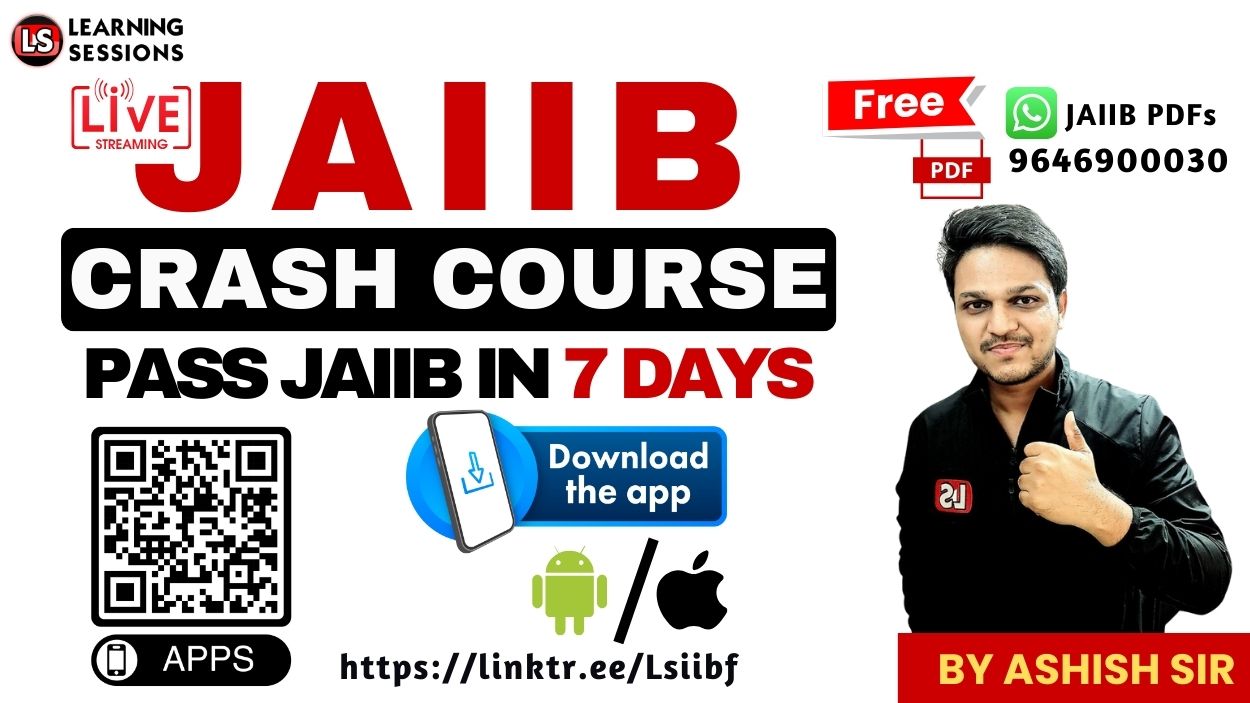Did you know that before the Insolvency & Bankruptcy Code (IBC) 2016, businesses would take years to resolve their financial issues? But today, companies that default on ₹1 crore or more face swift legal action! 📉
📚 CAIIB Study Resources 📚
👉 Check Here
👉 Check Here
👉 Check Here
👉 Get Tests Here
👉 Check Here
👉 Click Here
👉 Click Here
- What is IBC & why is it crucial?
- Key stakeholders – IBBI, NCLT, CoC, IRP & more
- Step-by-step Insolvency Resolution Process
- What happens if a company can’t repay its debt?
- Real-life examples & MCQs for exams
Who should watch this?
- Bankers preparing for JAIIB & CAIIB
- Finance professionals handling NPA cases
- Business owners who want to understand debt resolution
👉 Before we dive in, watch this video for a complete breakdown:
IBC 2016: Explained Step-by-Step
📌 What is Insolvency & Bankruptcy?
Ever wondered what happens when someone can’t pay their loans? Insolvency is when a company or person fails to repay, while bankruptcy is a legal declaration of this failure.
📌 Importance of IBC 2016
The introduction of IBC 2016 has completely changed the landscape of financial debt recovery in India. Earlier, businesses would struggle for years to resolve their debts, leading to massive NPAs in banks. The IBC has streamlined the process, reducing the time to resolve insolvency and protecting creditors.
📌 Key Players in the Insolvency Process
- IBBI (Insolvency and Bankruptcy Board of India): Regulates the process and ensures smooth execution.
- NCLT (National Company Law Tribunal): The main judicial authority for handling insolvency cases.
- CoC (Committee of Creditors): Composed of lenders, this committee decides the fate of the defaulting company.
- IRP (Interim Resolution Professional): Takes control of the defaulting entity to facilitate resolution.
📌 The Insolvency Resolution Process (CIRP)
- Step 1: A case is filed in NCLT by either the creditor or the company itself.
- Step 2: NCLT appoints an IRP within 14 days to oversee the case.
- Step 3: A 6-month Moratorium Period begins, during which no legal action can be taken against the company.
- Step 4: The Committee of Creditors (CoC) is formed to determine a resolution plan.
- Step 5: If a resolution is agreed upon, the company is restructured; otherwise, liquidation follows.
📌 Liquidation Process & Creditors’ Payment Order
- Insolvency Costs: Legal and professional fees are covered first.
- Secured Creditors: Banks with collateral are prioritized.
- Employees’ Salaries: Payments for workers must be settled.
- Unsecured Creditors: Lenders without collateral.
- Government Taxes: Any outstanding dues to the government.
- Shareholders: If funds remain, investors receive payments.
[FREE EPDF] Rehabilitation and Recovery | Module C Chapter 24 Part 3
📌 Real-Life Example: The Future Retail Case (Big Bazaar)
Big Bazaar, once India’s leading retailer, defaulted on debts. Under IBC, NCLT approved a new owner, Reliance, to take over and repay creditors. This saved 2,000+ jobs and settled debts effectively!
📥 Download the Free PDF Guide
Want a PDF with all these notes & MCQs? Simply message ‘Saved for C’ on 8369 4427 and get your copy instantly! 📩
Conclusion
IBC 2016 revolutionized how bad loans are handled in India. Now, creditors have more power, cases resolve faster, and businesses can either restructure or liquidate efficiently.
- ✅ If you found this helpful, drop a comment with your doubts!
- ✅ Subscribe for more JAIIB/CAIIB banking lessons!
- ✅ Download the PDF to revise before your exams!
🚀 Happy Learning & Best of Luck! 🚀
Also Like:





